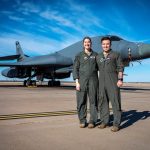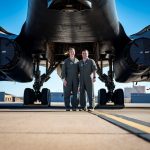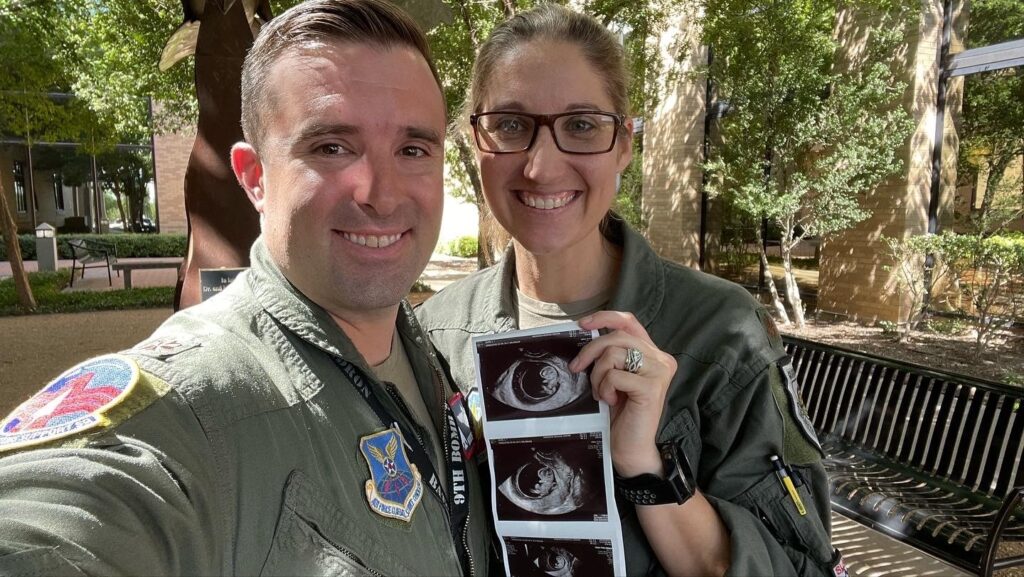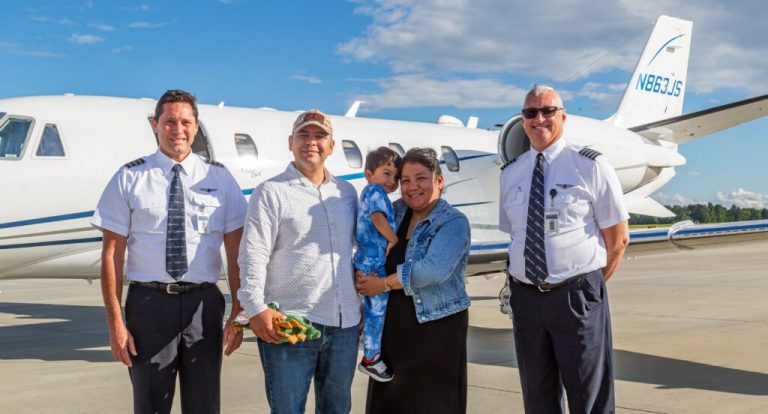Maj. Lauren Olme wears multiple hats: She’s an Air Force pilot, an assistant director of operations for the 77th Weapons Squadron, a leader, and a wife. She’s also making history as one of the first service members to fly a supersonic aircraft while pregnant.
According to a press release from the Dyess Air Force Base, “Baby Olme, who is expected to arrive in April 2023, has become one of the first babies in the Department of Defense to clock 9.2 hours in a supersonic aircraft.”
Becoming a pilot was a “lifelong dream” for Lauren, who watched her pilot father fly in the Air Force — so when she found out she was pregnant, she wanted to continue flying as long as it was deemed safe.
“One of my biggest reservations about getting pregnant while being on a flying assignment was the time away from the cockpit, so having the opportunity to continue to fly and not take as much time out of the jet is a great thing,” said the mother-to-be.
Lauren continued flying into her second trimester at 22 weeks, with support from her medical team and her husband, Maj. Mark Olme, who is also in the Air Force. “It’s a very personal decision that Mark and I made together because there are risks involved in flying the B-1 while pregnant, but after conferring with Air Force and civilian medical doctors, we felt comfortable with me flying for a few weeks,” she said. The couple met while attending the Air Force Academy and learned in August that they would be welcoming a baby this year.
“Lauren is an amazing lady, deploying a unit, developing a schedule, creating exercise scenarios, being a great pilot and leader, all while building a human,” said Mark. “I am not sure how she does it all, and with poise and grace. I am extremely proud of her and I can’t wait to tell our child they got to fly supersonic in formation with mommy and daddy.”

Her decision comes after the Air Force updated its policy, permitting any pilot to voluntarily request to fly while pregnant, and no longer requiring a waiver during the second trimester of “an uncomplicated pregnancy.”
Lt. Col. Charles Armstrong, 77th WPS commander, said that adjusting the policy provides “female aircrew members the same opportunities as male aircrew members.”
Armstrong added, “This allows female aviators to continue building up their qualifications and flight hours to progress in their career field through pregnancy. It was based on years of analysis and research from aircrew physiologists both in the Air Force and outside agencies to make the determination that it is safe and acceptable for women to fly a longer period than they have done in the past.”

According to Air Force Times, “In fiscal 2020, men comprised nearly 94% of active-duty pilots, and women just over 6%.” As the Air Force continues to develop strategies to build a more diverse pilot corps, this is a promising step in a more inclusive direction.
“I’m honored to be one of the first to fly in an ejection seat aircraft while pregnant,” said Lauren. “I wouldn’t have been able to do it if women in the Air Force didn’t advocate for these types of policy changes, so to live out a policy change that other women worked so hard to enact is truly an honor.”
RELATED: All-Black Female Crew Makes Historic Flight in Honor of Trailblazing Pilot Bessie Coleman












